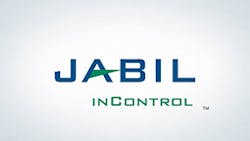It’s no secret that the role of electronics manufacturing services (EMS) providers in the supply chain has evolved over the years.
In the not-so-distant past, EMS providers would build boards for OEM customers, but only when the OEM had an upswing in demand and could not handle the uptick in orders with its own internal manufacturing. Gradually OEMs outsourced board production to their EMS providers even if there were no surges in demand and turned over subsystems manufacturing to OEMs as well.
Eventually OEMs outsourced the manufacturing and testing of entire systems to EMS providers, allowed them to purchase many of the commodity components for those systems, and had EMS providers ship the finished product to OEMs’ end customers.
Today, because EMS providers handle much of the manufacturing of an OEM’s equipment and buy many of the components used in those systems, OEMs want their contract manufacturers to manage supply chain risk, too.
One EMS provider that has developed tools to help manage supply chain risk is Jabil Circuit, based in St. Petersburg, Fla. Jabil builds boards and systems for OEM customers in the healthcare, life sciences, clean technology, defense, aerospace, automotive, and computing industries, among others.
Jabil’s tools, which are part of its home-grown proprietary In-Control system, help identify, measure, mitigate, and manage risk in the supply base.
In-Control is an “analytics engine that sits on top of our other IT systems (such as SAP) and allows us to see everything going on real-time,” said John Caltabiano, vice president, supply chain for Jabil. “It allows us to see the end-to-end supply chain.”
Caltabiano said EMS providers and OEMs face the same risks and OEMs “expect us to manage those risks. We build products for very large customers where they don't even touch the product that we ship directly to their customer,” he said. “We have to manage all that risk to make sure our supply chain is intact.”
Supply chain risk runs the gamut and includes quality of the suppliers’ products, delivery, product obsolescence, forecasts variation, and natural disasters that shut down production of components and other production materials. Jabil’s supply chain tools measured the risks of components used in production. “In our tool we have a rating of one through five,” said Caltabiano.
“We have 500,000 components and we can measure the risk of every single component, including the quality, delivery, obsolescence and flexibility risks,” he said.
Jabil measures the risk of using the parts and works with customers to try to reduce the risk. For instance, “we could sit down with the customer and say, ‘these parts have a delivery risk of five because they are single sourced. If you dual source this part that risk goes down to two because then we have two sources,’” said Caltabiano.
“The customer may say, ‘great, but we only buy about $50 per year of those parts,’ so qualifying another supplier would be more expensive. It would be more cost-effective just to carry inventory of parts,” he said.
Obsolete Is Risky
Component obsolescence is a risk issue for many OEMs. “Obsolescence is also a big issue for us because we are buying parts,” said Caltabiano. “OEMs aren’t buying the parts anymore so they might not know” what the inventory levels of the part are, or how long a supplier plans to continue producing, he said.
Jabil’s supply chain toolset measures the risk of the component going obsolete and keeps track of end-of-life notices that suppliers issue. Jabil uses various parts services and the data from those services are fed into the In-Control system, which monitors EOL notices on a real-time basis. Jabil determines the impact notices and issues obsolescence reports OEM customers.
Once Jabil knows that the supplier plans to cease production of a part by a certain date, the EMS provider “puts mitigation plans into place, whether it is a last time buy mitigation, or a value engineering mitigation” where a board may be redesigned, said Caltabiano.
The Quality Risk
Component quality is also a risk and Jabil measures defect per million (DPM) levels of components it uses in production. Jabil has defect-level thresholds for each part. If the defect level of the part is lower than the threshold, then there is little risk, but if the DPM level is higher than the threshold, the part is high-risk and “we have to decide if we can fix the problem with that supplier or buy the parts from another supplier,” said Caltabiano.
Another risk that needs to be managed is variation in forecast. Most OEMs send their forecasts to suppliers based on how many systems they expect will need to be built.
“We know that the forecast varies plus or minus 20% on a monthly basis and suppliers have to be able to respond to that,” said Caltabiano. A response could be using an inventory management program of a distributor.
The threat of a natural disaster disrupting its supply of necessary parts is a risk that demands attention. Jabil determines where components it purchases are produced and if the manufacturing locations of the parts are in area subject to natural disasters.
“We have a geothermal map where we know where the earthquake zones are and we have floodplain maps so we know where the suppliers are in a floodplain,” said Caltabiano. If suppliers are in locations subject to disasters, it’s necessary to determine if the supplier also makes parts in other regions that are less likely to be impacted by a natural disaster. Multiple sources for a part that is manufactured in several locations also helps to mitigate the risk of natural disasters.
In the event of an earthquake or a typhoon, the In-Control system “sends us an alert and tells us what parts are impacted because we have all the intelligence built in of where the parts are made,” said Caltabiano.
Caltabiano said that EMS providers will likely have to take on more risk in the future. “To bear that risk really requires us have very robust supply chain management tools and we will need to beef up those tools and process.”











